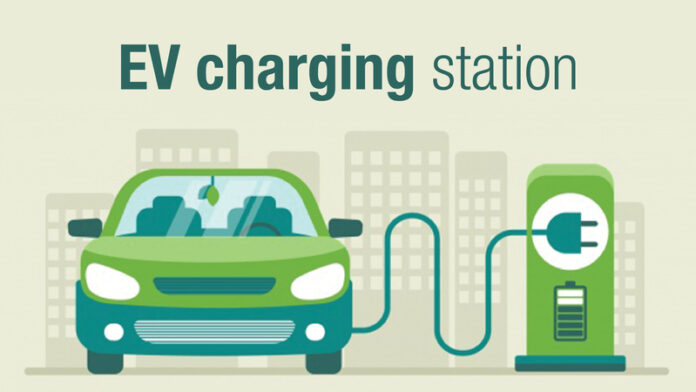Zesco to deploy EV charging stations in many towns – Mapani
By Fanny Kalonda
ZESCO Limited says electric cars will put Zambia on the map in terms of reducing carbon emissions if the use is accelerated.
Speaking at the ongoing 94th Agricultural and Commercial Show in Lusaka yesterday, Zesco managing director Victor Mapani said the company will deploy charging stations in many cities and towns to charge to vehicles in instances of long distances.
“In this country, basically, the future is here. We want to move away from using fossil fuels to drive us around to use electricity. This is an example because it’s a BMW, it can be indeed any car. It has a battery, and all you need to do is have that battery charged. Now, where do you charge that battery from? We have indicated already as you can see, these are the charges. They come in different shapes, sizes, and also ratings. Once you park your car, just plug it in and the car will start charging. Once you just charge you can drive,” he explained. “Particularly this vehicle is 150 kilometres on a full charge, but that is if you are doing a maximum speed of 120 [kilometres per hour]. So what it means is that after moving about 150 kilometres, obviously you will need to recharge the vehicle. So as Zesco, our innovation is to deploy charging stations in so many cities and towns so that you’ll be able to charge every time that you get to a point…And our idea is to take this further. We would like to have these chargers mounted and installed in most of the public places. Safe places like malls, offices for specific requirements for may be government officers, governmental officials.”
Mapani said the future “is here, as Zesco we would like to take a lead in ensuring we start mounting chargers wherever and where need is”. “What is very interesting is the cost of energy that you use in an electric car and the cost of energy use in a fossil fuel car. The difference is about six times. Six times cheaper to drive an electric car,” he said. “One of the biggest things about an electric charger is for example, Zambia, our electricity is almost 90 per cent hydro which is clean energy. So it means we’ll be using clean energy to power houses and to drive our cars. We are going to be put somewhere on the map in terms of reducing the carbon print if we accelerate the use of electric cars. Each car will come with its domestic charger which will be using the normal socket in your house, charging in about 12 hours. So this is a good innovation. And I think it’s a good thing for Zambians. Now the appetite on how fast Zambians want to move, will be driven by how well we put up this case to them.”
Mapani said in Zesco’s case, “we do believe that this is the future and the challenge that people have now is where do we charge our cars when we travel”.
“You do have a domestic charger. That charge can take you 150 kilometres. So for example, if you’re within Lusaka, you can buy your own car now and start using. You can do your movements into town to office and back to business points and back without any problems. The challenge is when you take your long trips. That’s why I now want to ensure that along the way we plant the electric vehicle chargers for usage,” he said. “What we also want to happen is that at your home you’re using exactly the same amount, the rate of pay is the same domestic tariff. But these will be commercial. They’ll charge faster. They are more robust.”
And Mapani also launched a smart house mobile application to control the home appliances usage when someone is not there.
“The Smart House basically brings technology into your town. What we mean by that is that you’ll be able to control the usage of power in your house while you are away from your home. So basically anybody with an Android phone from as far back as 2014 editions up to now, Android phone, you can actually access a smart house application and the Smart House application is an internally developed project by Zesco engineers who have actually sat down, put their thoughts together. The idea is to ensure that you have control of power in your house. You can reduce the wastage. We drive around you see people living lights on you can just check on your phone on site to switch off the lights or fix them,” said Mapani. “Further, you can also decide when to switch on your gadgets. For example, you decide when you switch on your geyser. You can also switch on your gadgets like television, lights in the house, microwave. This will be sitting right in your hand.”
